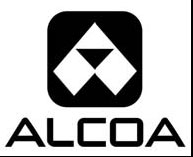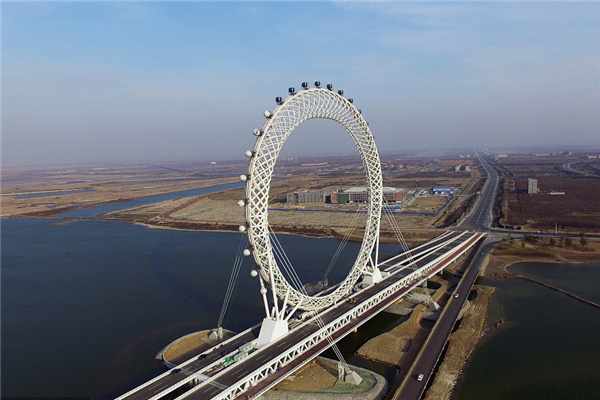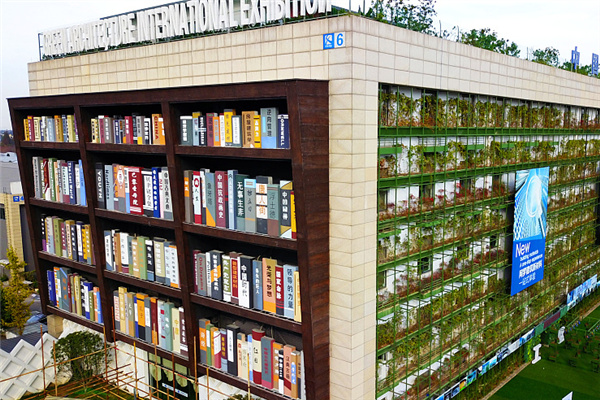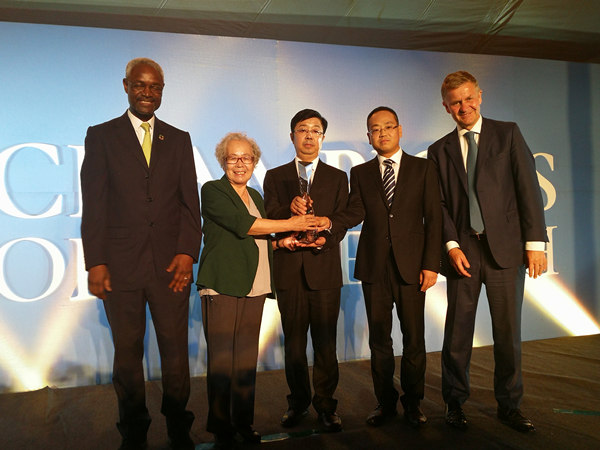

Aluminum giant Alcoa has sought ways to minimize waste since its founder discovered how to cost-effectively refine the mineral 120 years ago.
As it moves into another century the company has made considerable progress meeting 2020 targets in minimizing emissions and rates of waste generation, including significant reductions in greenhouse gases (GHGs), volatile organic compounds (VOCs), nitrogen oxides (NOx) and the volume of waste disposed in landfills.
|
Power on Alcoa meets large electricity demands through a range of hydropower projects and conventional generation facilities like this one in Angelsea, Victoria, Australia that supplies power for its Point Henry smelter. |
Eliminating sources of waste altogether is its ultimate goal - one Alcoa is now approaching by measuring waste generation and using modern technology for discharge treatment and control.
The company has a robust environmental compliance tracking system that ensures rapid correction of any unusual processing conditions, while its environmental team formulates and communicates best practices to ensure operations in all locations minimize potential impacts on the environment.
GHG reductions
In 1998, Alcoa established a strategy team that developed and promoted the company position on climate change, including its target of reducing GHG emissions by 25 percent from 1990 to 2010.
Alcoa reached the target in 2003 and maintained reductions since despite continuous growth in production.
Alcoa continues to pursue development of GHG-free inert-anode aluminum smelting, though technical and cost barriers remain. In the interim Alcoa is using CO2 to neutralize bauxite residue and prepare it for long-term disposal reducing GHG emissions in the process.
The company is already using bio-diesel with 20 percent soybean oil or other non-petroleum content to power mobile equipment at some of its plants.
Alcoa is committed to decreasing the company's reliance on fossil fuels by increasing the use of natural, renewable energy sources that help lower carbon dioxide emissions.
The company's hydroelectric power facilities currently generate billions of kWh for its operations worldwide. The new Alcoa smelter in Iceland, which recently came online, uses hydropower to achieve one of the lowest levels of GHG emissions per ton of aluminum in the industry.
In Brazil, Alcoa is participating in the development of new hydroelectric plants that independent studies show will be environmentally sound, socially responsible and economically feasible.
The company reduced its per fluorocarbon (PFC) emissions from 4.2 million metric tons of CO2 equivalent in 2005 to 3.7 million in 2006. All Alcoa aluminum smelters have programs in place to reduce these emissions and reduce the root cause - anode effects - is a continuing priority in its smelter operations.
Alcoa closely monitors PFC emission performance with a scorecard detailing each plant's performance against internal and external benchmarks that is shared among all smelters at the beginning of every month.
Another method Alcoa will adopt to reach its 2020 emissions goals is the expanded use of recycled metal in its fabricated products. About 20 percent of its sheet, plate and extrusions are currently made from recycled aluminum. Its 2020 worldwide commitment is to produce 50 percent of those products from lower energy and GHG-intensive recycled metal.
Recycling of beverage cans now eliminates an estimated 2 million tons of CO2 each year.
Aluminum is used in industries - and people's daily lives - throughout the world and Alcoa is bringing its long and wide-ranging experience in Europe and North America to China to cooperate on various projects, including aluminum-intensive buses, trucks and automobiles. The use of aluminum in transport applications can quickly pay for itself through fuel savings and GHG reductions.
According to company estimates, by 2020 or earlier aluminum used in automobiles, trucks, railroads and buses can save enough fuel to offset all GHGs produced by all the aluminum companies in the world and enable the industry to be a net reducer of GHGs.
Emissions reductions

Alcoa's strategic goals call for reductions in key emissions measured against a baseline set in 2000 - in absolute terms not related to continued growth in production. Despite the aggressive approach, Alcoa has made considerable progress on some of its targets, such as NOx and VOC emissions, both of which have registered reductions of 35 percent or more.
It also made progress on reducing SO2 emissions. The company closed three lignite-fueled power units at its Rockdale, Texas, operation at the end of 2006, which resulted in substantial reductions in both SO2 and NOx emissions. As well, a wet limestone scrubber system is being installed at its Warrick, Indiana power plant in the United States. The system will go online this year and is projected to reduce SO2 emissions at the facility by 90 percent.
Waste minimization
Alcoa set the goal of zero waste disposed in landfills by 2015, with a mid-term goal of a 50 percent reduction in landfill waste by 2007 - a benchmark it hit in 2004.
It continues to make progress in converting a significant amount of waste from its smelting process, known as spent pot lining (SPL), into useful products. SPL is generated when the carbon and refractory lining of a smelting pot reaches the end of its serviceable life. In the last few years, Alcoa has been a leader in finding ways to transform this SPL waste into a raw material for other industries. It has worked with cement makers in several countries to develop an environmentally safe process to turn SPL into a resource for cement kilns. The new process treats chemicals of concern and at the same time uses the energy value of the material to reduce the cost of cement production.
Bauxite residue is the most significant solid byproduct of the alumina refining industry, with every ton of alumina resulting in about two tons of bauxite residue. Each of Alcoa's refineries handles bauxite residue differently based on local conditions. But the company continues to explore opportunities to use bauxite residue as a source material in a variety of applications.
Alcoa has developed, tested, and, in some cases, implemented processing modifications aimed at reducing the environmental footprint of storing residue by chemically rendering the material more suitable for reuse or long-term management.
(China Daily 05/26/2008 page5)













